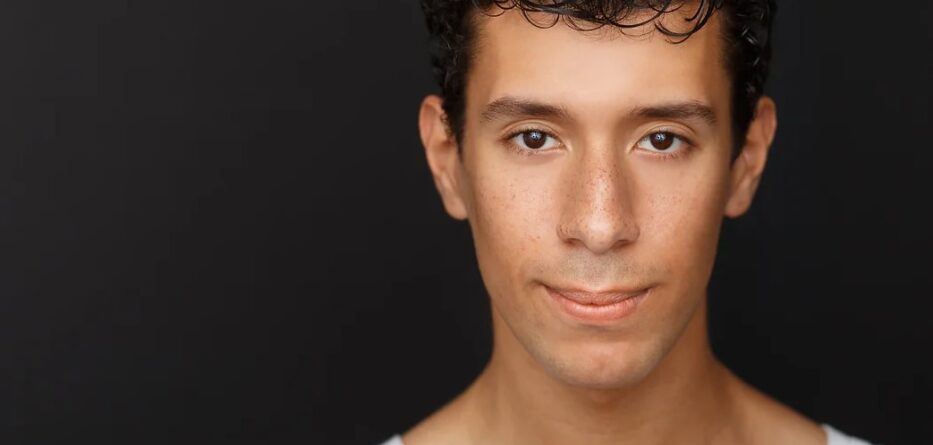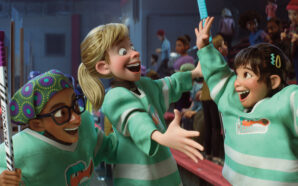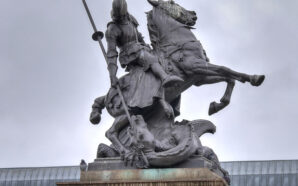Arturo Hilario
El Observador
Cats is one of the most recognizable musicals in Broadway history. Even if you have not watched the show, its music, or even its logo has crossed your eyes. Countless references to the show are found in pop culture, and its distinctive style is unmistakable.
Composed by Andrew Lloyd Webber and based on T.S. Eliot’s Old Possum’s Book of Practical Cats, the record-setting show has played in over 30 countries and 15 languages.
The basic outline is that Cats is a musical about a group of special street felines, known as Jellicles, on a special night in their community. The show is essentially a cat revue, with the most iconic cats showing their talents and skills as they tell their stories and move along the narrative with their songs and dances.
José Raúl Mangual is an actor and dancer who is in his first touring production with the famed Broadway production. Mangual recently talked to us about his experience in working on the stage to the different cats he brings to life as a swing on the musical. Read along to hear about the different cats he plays, what it takes to put on the cat makeup and get on that stage, and his personal connections to the themes and songs of the show.
Cats is at San Jose Center for the Performing Arts from now until Sunday September 25th.
Hi Jose Raul, thanks for your time. First off, how did you get started in the performing arts and what was the thing that kind of inspired you to go into that field?
So I have been singing since I could make noise. There’s a home video of me as a baby in the bathtub after I learned how to stand. I’m holding a toothbrush, I’m using it as a microphone, and I’m singing some song that made sense to my ears at the time. And the first example of any sort of performance in general was through church.
I was raised in the church. I grew up actually in a Pentacostal Christian background, and it was a Puerto Rican Pentacostal Christian background. So that completes the characterization there. And I sang in church from a young age, and so it’s natural that I would start studying choir in middle school.
But, yeah, I’ve always had an affinity for vocal instrumentation if you will. And I started my first [show] in 8th grade. A fellow choir member told me about this Christmas show that was happening at a theater in our hometown, which is Lancaster, Pennsylvania. And I auditioned for this show that what is called the American Music Theater. And I was up there as one of those child vocal soloists, there were three of us.
So that was my first tiptoe into the world of professional vocal performance. And then my first organized musical was 13, the musical, and from there, I fell in love with musical theater and actually Cats was the second musical that I ever did at the age of 14. And that was before I knew how to dance.
So now you’re back to Cats.
Yeah, back to Cats. And it’s funny…I went to school for Musical Theater at Temple University, and after five years there, I was feeling like I needed something else to nourish my spirit besides musical theater. So I decided to focus on recording artistry and film, and television specifically. But the opportunity to audition for the show for this North American tour came into my lap out of the blue, and I wasn’t going to do it, but my friend helped me open my eyes and was like, “you know, this is of all the musicals, this is like the perfect musical for you.”
So it was great that [my friend] encouraged me, because here I am, on my second leg of the tour!
You are a swing for the show. Can you tell me what you do and what roles you swing for?
Every swing has different tracks that they cover, some of them overlap, but the job of a swing in general is to be prepared to drop into any role at any time. So that could be you get, “hey, this person unfortunately has to attend a funeral in three days, so you’ll be covering until they return,” so that is kind of the more advanced notice side of things. But then it could be mid show, someone, you know, feels nauseous, or has an injury and you have to get into makeup, in the costume and get on stage as quickly as you can and as seamlessly as possible. No one knows the difference.
So I currently cover five roles, and three of them are principals, two of them are the ensemble roles. But the amazing thing about Cats is almost all of the cats are on stage for the majority of the show.
The Cats that I cover are the Rum Tum Tugger, who is recognizable for having leather and chains and the big lion mane, and then you have Munkustrap, who is the narrator character, and he’s next in line to lead the Jellicle tribe. And then the third principle that I cover is Old Deuteronomy and Old Deuteronomy is the current leader of the tribe.
He has lived many lives in succession. So you hear about cats with nine lives. He’s one who has lived at least nine, if not maybe more, it’s unclear, but he’s been around longer than any of the other Jellicles.
I also cover Plato/Macavity, who on one side, you have a cat with a charming personality who falls in love with Victoria the White Cat, and they awaken to the sensuality of being a full adult cat. But then on the other side of Plato is, and this is technically still the same cat, is Macavity, who is an evil cat. He is the nemesis of the tribe.
Most people believe that he was once a Jellicle himself, but he has since resorted to stealing cats, mostly women cats, and sometimes they don’t return. So he’s traumatized several members of the tribe, including Grizabella, who is one of the most memorable cats in the show.
Then my fifth cat I cover is Coricopat. He is a telepathic twin cat. So he is ageless in a way. He’s just a tad bit younger than Old Deuteronomy and both do a lot of lifts in the show, so pressing women above our heads, or teaming up with another cat to throw them in the air or things like that.
You guys wear the costumes, accessories, all that stuff. Can you tell me a little bit about that side of it?
The costumes were originally designed by John Napier, from the original Broadway production. And each cat has a bit of a different configuration of different costume items, but generally there is a unitard. And then we all do our own makeup except for some kind of quick changes, they will receive assistance in that. And then we have wigs which are designed geniously to look like cat ears, but also maintain some familiarity as far as like human hair goes. So it’s actually yak hair, which is a common wig for human beings in their everyday life. And then we will have some type of shoe and then usually leg warmers or arm warmers or both. And then, of course, a tail.
What would you say is the reason that you would recommend the show to people that have not seen it yet? Why should they see Cats?
Cats really does transcend musical theater, like the idea of what musical theater is, because especially this production, this is a revival of the original Broadway production. So this revival was done in 2016 by Andy Blankenbuehler, who was fresh off the success of Hamilton, which broke records in terms of Tony nominations and Tony wins and changed musical theater forever, literally.
Andy Blankenbuehler for this production, he’s working with Gillian Lynne’s original choreography, and he’s repurposing it for modern audiences. Like, we still have the felinity that people love. Not only is it admirable because it’s an animal, there are certain things that you won’t see on stage or on TV, but you will see in your living room with a pet and with cats specifically. But this is something that you get to see, that you get to see humans interpreting that. So that alone makes it unique.
Then you also have the fact that this production is almost like a light show in itself, the projections are amazing. There are so many intricate lighting designs and moments of different colors that evoke emotion in you. And it’s really an art form of the lighting itself. So that’s another thing. You get like a light show.
So if you’re someone who doesn’t like musical theater, this is not just musical theater because you get these amazing designs. Then you have the dancing. The dancing is insane. First of all, the fact that we hardly leave the stage for 2 hours is nearly unheard of. And then you have these dancers who have been training their whole lives, our dance captain has been to the International Ballroom Dance Championships multiple times. You’re getting top tier dancers executing this choreography, which is beautiful, stunning, breathtaking, and intimidating.
So then not only is it beautiful to watch, but then where else are you going to go to see a show where the characters don’t want you to be there?
The cats at the beginning are like, “humans are not supposed to be here!” And then you don’t even know what a Jellicle cat is. The reason to come is that you’re not going to see anything like it anywhere else. It’s not like the original production, and it’s not like the movie that came out recently in 2019. It is totally its own.
Is there anything else that you like to touch on? Either about you or the show or anything like that?
There is something I would like to say which is specifically for Hispanic and Latino audiences, especially immigrants.
You know Puerto Rico is technically part of this country, but it’s no secret that Puerto Ricans can feel a bit alienated from the country. I think that this show in particular is really speaking to me lately because my grandparents are all from Puerto Rico. So something beautiful about the show is the theme of generations and wisdom.
Even the idea of language, right? Like I can speak Spanish and I could survive in a Spanish speaking country but when I was four years old, Spanish was my first language but when I was four my parents wanted me to learn English because I had to go to school and it was an English-speaking school and they wanted to prepare me for what their understanding of success would be in this country. And they did a good job of that. But with that comes the loss of connection, for me, to my grandparents and I know I’m not the only one in my generation who experienced that.
So for holidays I get to be around them and I would love being in the presence and getting to laugh with them and play dominos with them or talk either food, watch sports games, what have you, but there was that language barrier.
There’s a song at the beginning of act two, which is a stunning piece of poetry called “Moments of Happiness”. And basically, it’s saying that if you take the moments of happiness, “we’ve had the experience, but missed the meaning,” you had an experience but you missed what it meant. And when you approach the meaning, it restores the experience in a different form. So reassessing that experience, redefines it for you, you will find new things in that single experience beyond any meaning that we can assign to happiness.
“The past experience revived in the meaning is not the experience of one life only, but of many generations, not forgetting something that is probably quite ineffable”
So those are direct quotes of the song and ineffable means it’s like inarticulable, it’s ephemeral, it’s not of our cognition. And to me I can feel that even just looking at my grandparents’ eyes.
Only one of my grandfathers has passed, rest in peace. But when he passed that was really painful because all I had was a memory of looking at his eyes and like smiling at him and laughing with him but not being able to bridge back out, not being able to really communicate things to him.
But I could feel like in his absence I could remember looking in his eyes and I could feel his presence from time to time and there is information that is passed on without, even beyond words, wisdom and love. And I think that’s something that my generation, gen Z, I think we are overlooking the wisdom of previous generations maybe because they didn’t have the same technology or they didn’t have the same access to education, but they were stupid, they were just as intelligent as we are. And I think Cats speaks to that and I think that’s something that can be really helpful for Latino and Hispanic populations.






